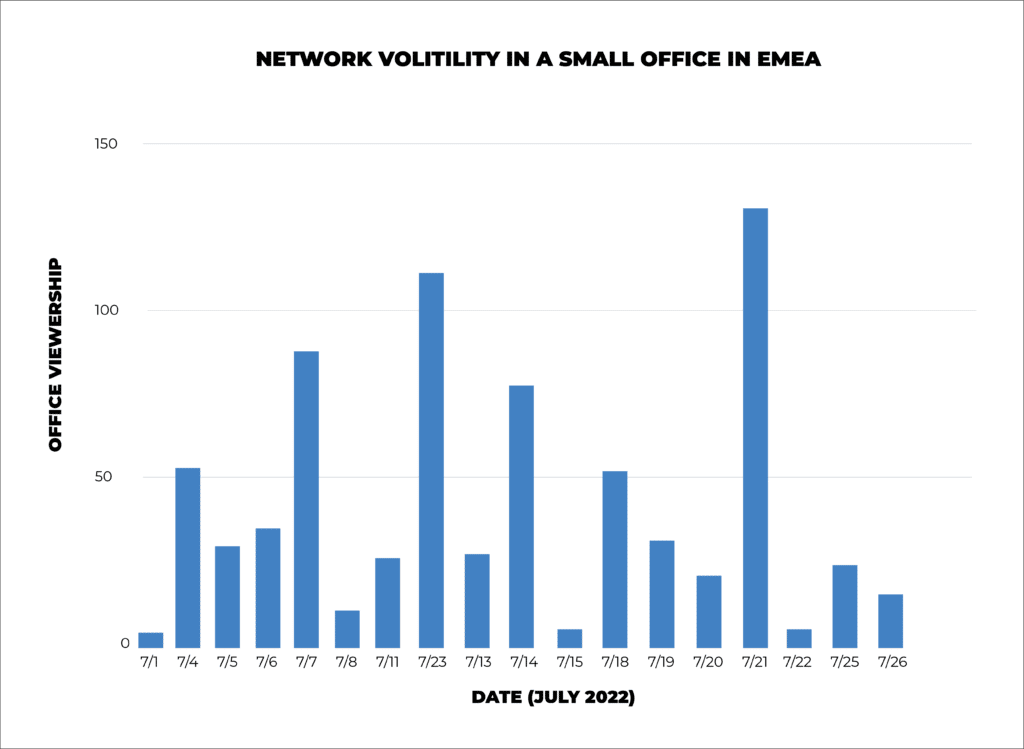Webinar Series Highlights – Advancing Modern Work Through Microsoft Teams Part 1
Webinar Series Highlights – Advancing Modern Work Through Microsoft Teams Part 1
The way we work has changed forever. To adapt our old ways of working to the modern workplace, Microsoft Teams has become an integral tool to create seamless collaboration and communication experiences across locations and devices.
In our latest webinar series, Advancing Modern Work Through Microsoft Teams , Microsoft MVPs and Kollective experts explain how to get the most out of Microsoft Teams to increase communication, collaboration, and productivity. Hosted by Alistair Pugin , Microsoft Azure and M365 Apps & Services MVP, the four-episode series covers a range of topics:
Episode 1: Optimizing Your Network for Microsoft Teams
Episode 2: Empowering Collaboration with Microsoft Teams Devices
Episode 3: Developing Inclusive Communications Through Microsoft Teams
Episode 4: Supporting Neurodiversity with Microsoft Teams
In this article, we will briefly recap episodes one and two and highlight invaluable tips shared by the experts on how to optimize your workflow and efficiency within Microsoft Teams.
Episode 1: Optimizing Your Network for Microsoft Teams
Video communications are key to enabling modern work. Unprepared networks struggle to deliver high quality Microsoft Teams meetings, live events, and webinars.
In this episode, Alistair is joined by Nicolas Blank
, Microsoft Azure and M365 Apps & Services MVP, and Kollective’s VP of Product, Garrett Gladden to discuss:
- Preparing your connectivity options
- How Teams handles audio and video calls
- Where bottlenecks occur
- How to analyze what your network looks like
Tips for Flawless Teams Video Communications
- Understand your network – Whether you are about to roll out Teams or your current user experience is not up to par, it is crucial to understand your network’s capabilities and if it is set up to deliver a quality experience through Teams.
- Understand what you need from Teams – Not all devices are created equal, and endpoint performance issues may cause poor user experiences. Examine the devices that are consuming Teams video on your network and understand the platform’s impact on the hardware.
- Utilize the tools from Microsoft – Microsoft’s Call Quality Dashboard shows you organization-wide call and meeting quality, and you can leverage Power BI to analyze that data.
- Know your options – Understand your access points and trace what PoP (point of presence) you are connecting through.
- Measure, change, then measure again – Analyze network performance, make changes, and measure again to see if there has been an improvement. Microsoft 365’s network connectivity test is an easy way to measure your network’s performance repeatedly. Be sure to compare the performance on home networks versus corporate networks versus a branch site to gain a complete picture.
Episode 2: Empowering Collaboration with Microsoft Teams Devices
Creating inclusive Teams meeting experiences when only some are physically present is a challenge for businesses offering hybrid or remote work options. Episode two focuses on the latest capabilities and features of Microsoft Teams-enabled devices to bridge the gap between the office and home.
Tom Arbuthnot , M365 Apps & Services MVP and Microsoft Communications Certified Master, takes you through:
- Microsoft Teams Rooms Pro
- IntelliFrame
- Hotdesking
- And more device ecosystem updates
In the clip below, Tom emphasizes the need for businesses to budget for reasonable devices for those working from home.
“Don’t scrimp on home devices. People are spending so long at home that if you’re impacting the meeting experience, you’re impacting everybody’s productivity.” – Tom Arbuthnot
Tips to Improve Work-from-Home Teams Meeting Experiences
- If you are on a tight budget, invest in audio over video.
- Logitech 930e webcam and a decent headset (wired or Bluetooth) is a great place to start. If you are looking to upgrade, consider Logitech’s Brio 4K webcam.
- Pay attention to your lighting set up. If you have poor lighting, consider a ring light to improve visibility.
Microsoft Teams has unlocked many doors for the modern workplace and allowed us to quickly adapt to changes in where, how, and even why we work. Navigating the Teams ecosystem and the options available can be daunting. The Microsoft MVPs who joined us for this series are a font of knowledge in all things Team related.
Stay tuned for part 2 where we recap episodes three and four or take a deep dive into each topic by watching the episodes on-demand.
The post Webinar Series Highlights – Advancing Modern Work Through Microsoft Teams Part 1 appeared first on Kollective Technology .





